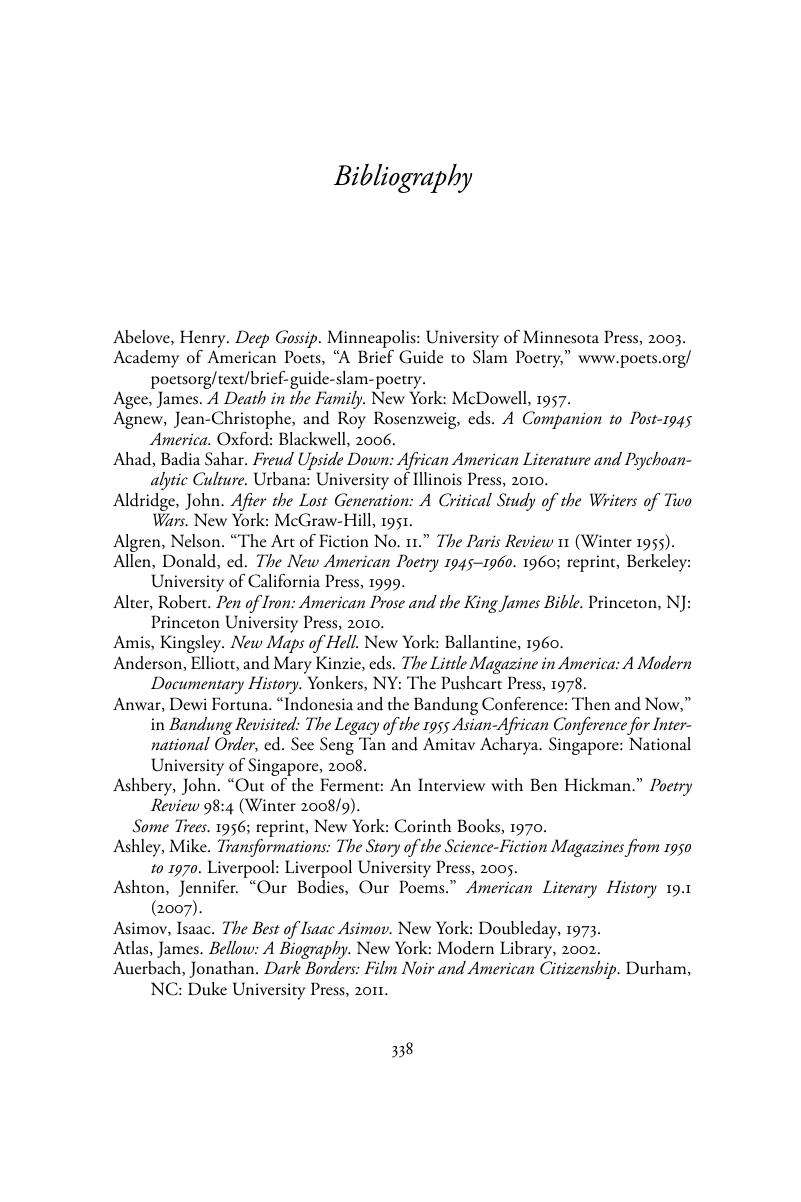Book contents
- American Literature in Transition, 1950–1960
- American Literature in Transition
- American Literature in Transition, 1950–1960
- Copyright page
- Contents
- Illustrations
- Contributors
- Introduction
- Part I Cultural Issues
- Part II Varieties of Literary Experience
- Part III Schools, Movements, and Sensibilities
- Part IV Formats and Genres
- Bibliography
- Index
- References
Bibliography
Published online by Cambridge University Press: 11 December 2017
- American Literature in Transition, 1950–1960
- American Literature in Transition
- American Literature in Transition, 1950–1960
- Copyright page
- Contents
- Illustrations
- Contributors
- Introduction
- Part I Cultural Issues
- Part II Varieties of Literary Experience
- Part III Schools, Movements, and Sensibilities
- Part IV Formats and Genres
- Bibliography
- Index
- References
Summary

- Type
- Chapter
- Information
- American Literature in Transition, 1950–1960 , pp. 338 - 359Publisher: Cambridge University PressPrint publication year: 2017

